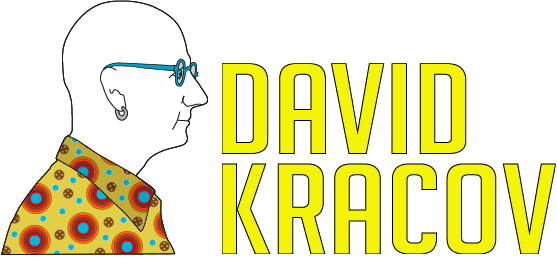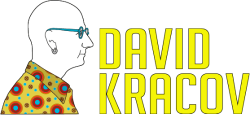Sculpture vs statue
The beauty of art is that it exists in different forms, shapes, and sizes. It’s a product of human imagination and a series of moments that inspire man to get creative. When it comes to statues and sculptures, many people refer to them interchangeably, although they are distinct from one another.

In the coming sections, we reveal the differences between a statue and a sculpture and how to tell the two apart.
What is a Sculpture?
A sculpture is an abstract or two or three-dimensional representative form of art made from metal, stone, plastic, or molding clay. Sculptures can be conceptual, figurative, or avant-garde in how they’re produced.

The Merriam-Webster Dictionary defined sculpture as:
A: The action or art of processing (as by carving, modeling, or welding) plastic or hard materials into works of art.
B: Work produced by sculpture or a three-dimensional work of art (such as a statue).
Traditionally, sculptors would create sculptures by carving heavy-duty materials such as steel, wood, marble, ceramics, or limestone. However, modern-day artists experiment with different kinds of materials and processes to create sculptures.
What is a Statue?
A statue is usually a life-size or large carved figure resembling a person or animal. Statues can also be small enough to pick up with your hands and are known as figurines or statuettes. A statue is created through modeling, casting, or sculpting materials to produce a form with a three-dimensional depth.

Eden Fine Art – David Kracov – Gift Of Life
Throughout history, statues have represented religious, commemorative, and symbolic people, deities, or events. You’ll find statues in places of worship, town squares, historical landmarks, and public spaces.
Is a Statue a Sculpture?
Statues can be called sculptures, but sculptures aren’t always statues. Essentially, statues are not considered or termed as works of fine art. They’re often straightforward representations of people, animals, or characters. Unlike sculptures, statues are not viewed as creative pieces of work.

Eden Fine Art – David Kracov – Grab a Chair (Blue-Orange)
Difference Between Statue and Sculpture
Let’s take a quick look at the stark differences that make a statue and sculpture unique creations.
Statue
- Designed and produced to mimic real-life representations of people or animals
- Placed at public sites for mostly religious or community-based purposes
- Not usually erected in an art gallery or exhibitory space for sale
- Created with a life-size or larger form
- Involves limited creative freedom
Sculpture
- Designed and produced using one’s creative imagination or abstract perspective
- Can resemble a person, animal, or object but with more creative freedom involved in its making
- Often requires meticulous, intricate craftsmanship
- Usually placed in museums and art galleries as works of art
- Can be priceless or exhibited to the public for sale
- Involves elaborate work by hand through wood or stone carving, clay firing, or bronze casting
Famous Statues and Sculptures From Around the World
By mastering creativity, skill, and imagination, man has left an indelible impression throughout history. No matter where you live in the world, you’re bound to come across a statue or sculpture that will grab your attention.

Take a look at these famous statues and sculptures that still proudly exist to this day:
Statues
- Statue of Liberty: Whether you live in America or not, Lady Liberty is one of the most identifiable and famous statues in the world. It took 350 pieces in 214 crates to ship and assemble the statue in New York City.
- Statue of David: It took Michelangelo 2 years to finish the marble effigy of David. The statue is placed in the Galleria dell’Accademia di Firenze in Florence. His confident poise and remarkably realistic features make David a masterpiece that is still viewed in awe by visitors.
- The Thinker: Auguste Rodin was famous for carving statues that depicted the human form with a stark likeness. Situated in Paris, The Thinker is an iconic statue that symbolizes man’s profound intellect that sets him apart as a species.
Sculptures
- Laocoon and His Sons: The impressive display of drama is remarkably realistic of what many believe transpired between a priest and his sons Antiphantes and Thymbraeus. Laocoon and His Sons depicts serpents emerging from the sea as their bodies coil around the three struggling figures. While the sculptor is unknown, this piece of work that sits in the Vatican has been praised for its mastery and attention to detail.
- Unique Forms of Continuity in Space: Sculpted by Umberto Boccioni, this enigmatic yet fascinating piece of art captures the sculptor’s eye for the dynamic nature of objects. The bronze figure takes on a windswept stance that marries modern and past aesthetics in one form. The sculpture sits in New York City’s MoMA (Museum of Modern Art).
- Aphrodite of Milos: Sculptures were sometimes discovered with missing limbs as was the Venus de Milo, which was discovered by a peasant in 1820 on the Greek island of Milos. Now situated in the Louvre in Paris, the Greek goddess of love has inspired artists such as Dali to create similarly beautiful sculptures.
Introducing David Kracov: Contemporary Pop Art Sculptor
“Comic books are the gateway to literacy.” – David Kracov
Kracov challenges the reality of art by creating 3D wall sculptures that effortlessly animate a room with color, intrigue, and character. His free-standing sculptures are just as brilliant. The sculptor draws hundreds of tiny sketches that are then hand-cut from a sheet of steel and filled with acrylic polymer paint.

His 3D wall sculptures burst with vivid hues and carry an artistic blend of contemporary and abstract aesthetics. Kracov’s originality entrances viewers with a kaleidoscope of color, addictive energy, and emotional depth. Even his free-standing sculptures show us how with a little bit of humor and imagination, life can be filled with beauty and wonder.
The motifs he creates carry quintessential comic book hues that make each collection a treat to look at. Every sculpture that Kracov creates undergoes a wildly creative, painstaking process where two pieces are never the same. The sculptor chooses to finish each piece individually, giving his works of art a unique form that collectors are proud to own.
Now that you know the difference between a statue and a sculpture, you should be able to easily identify them when you stroll through your city or a foreign land. There’s plenty to see in the world so go ahead and explore these impressive man-made creations!
I'd like to receive future updates and newsletters





